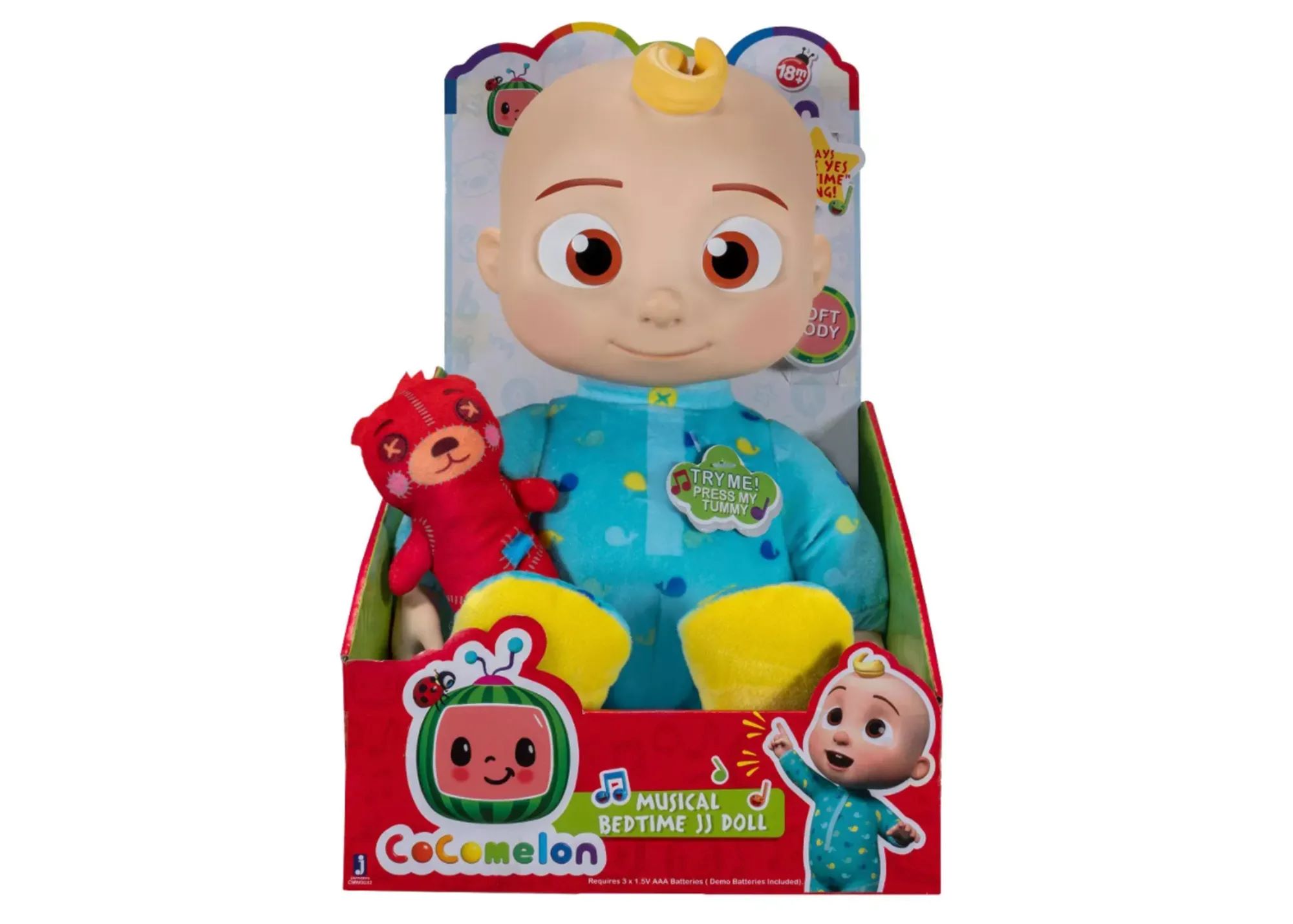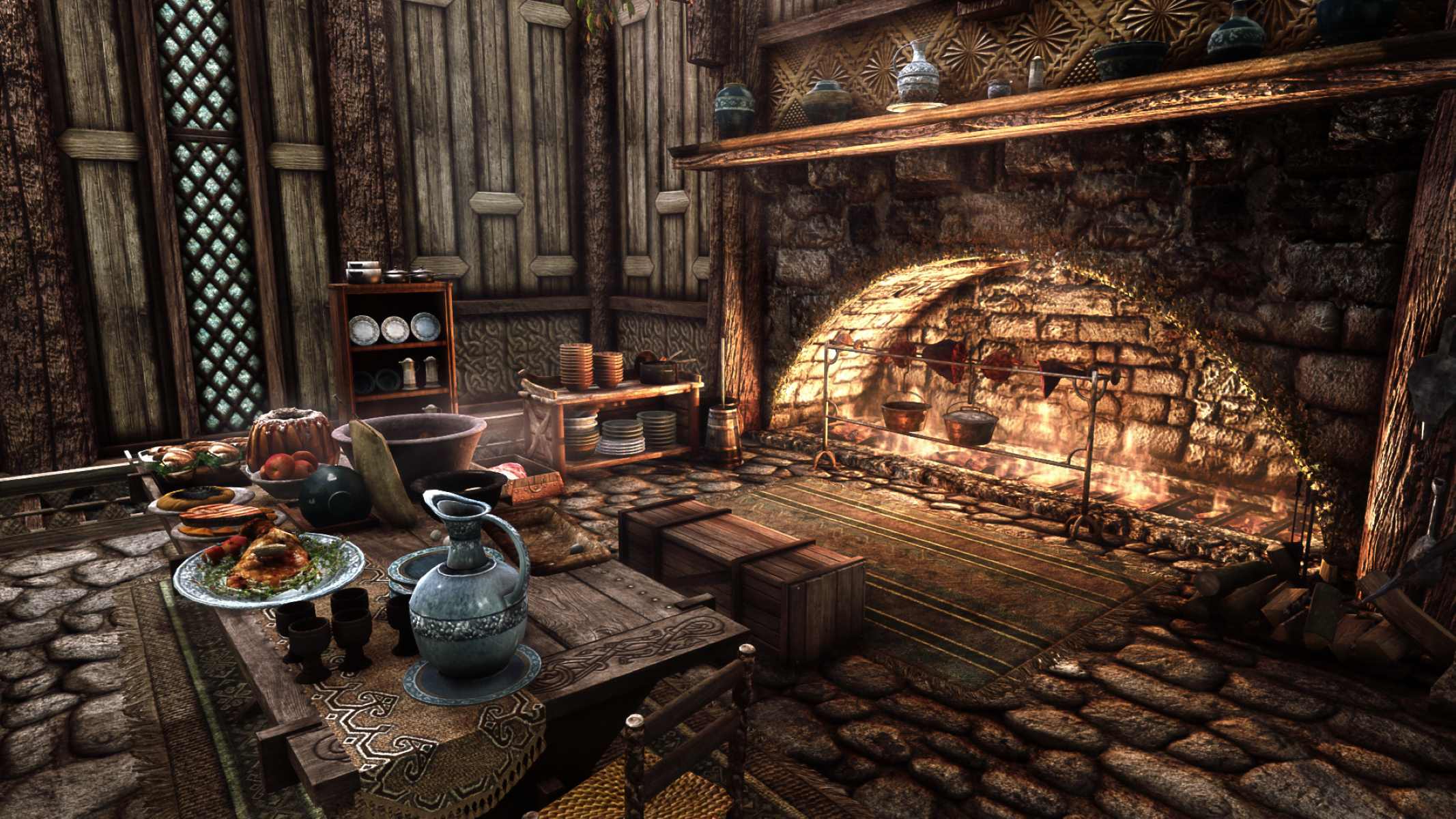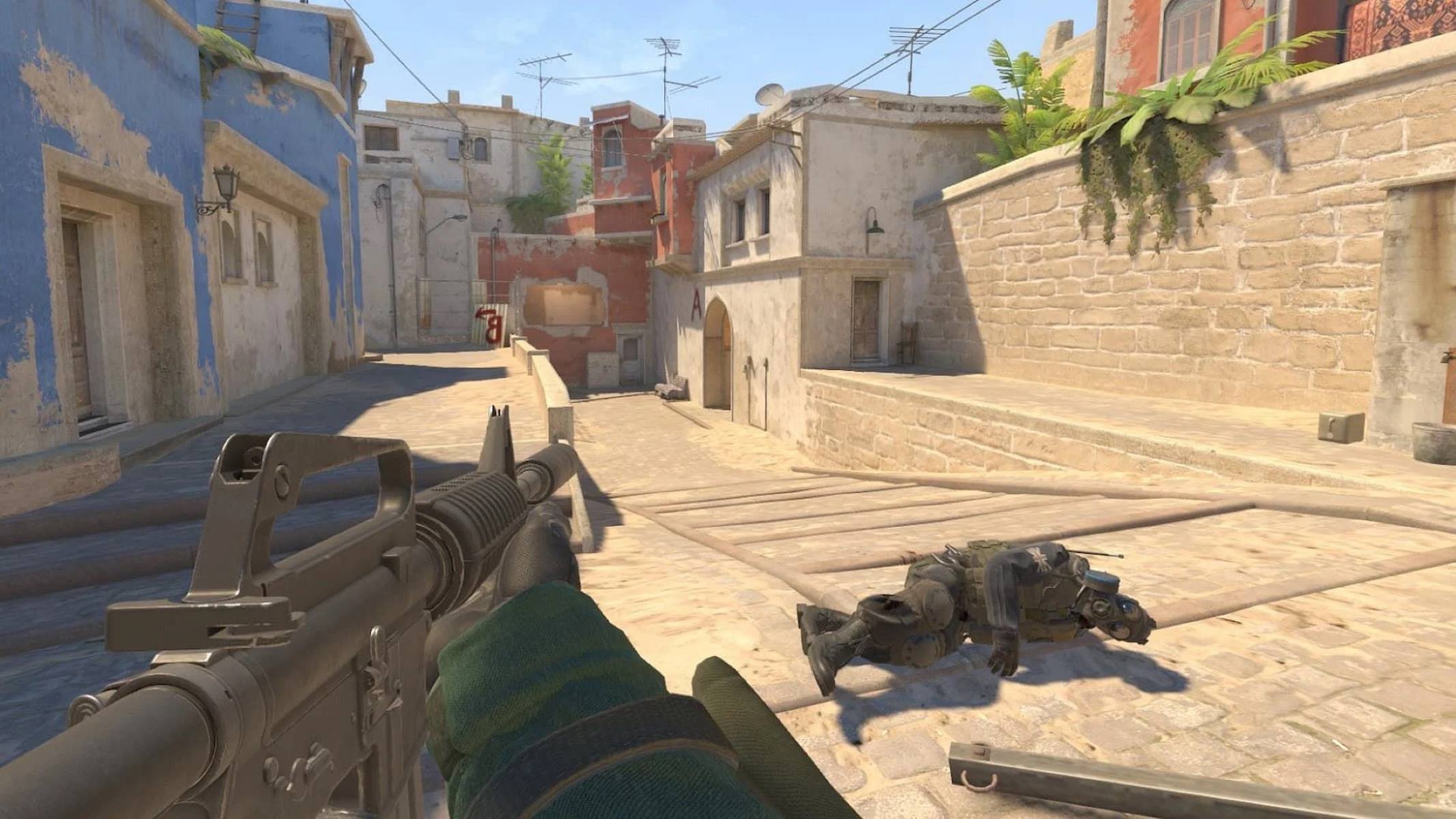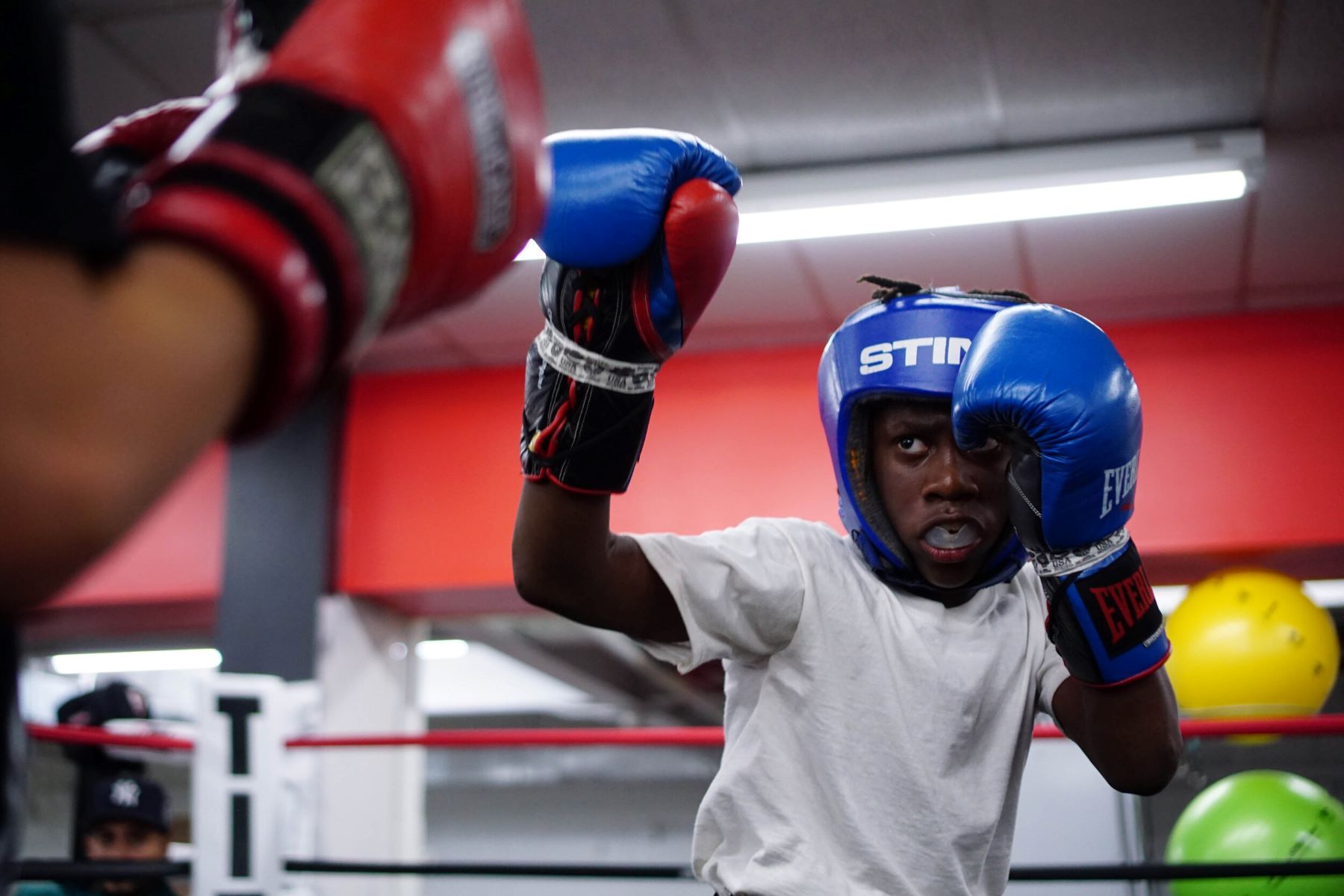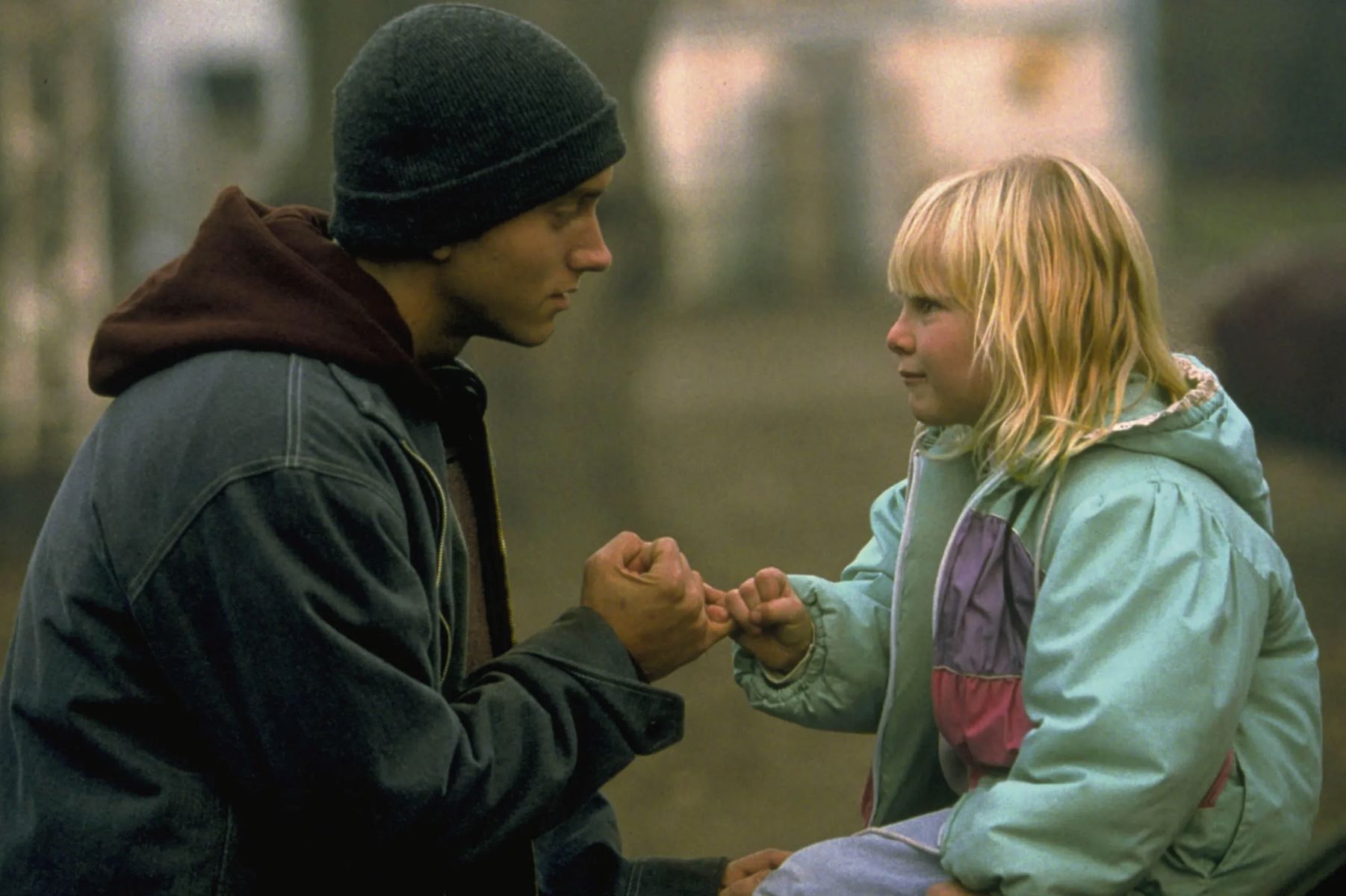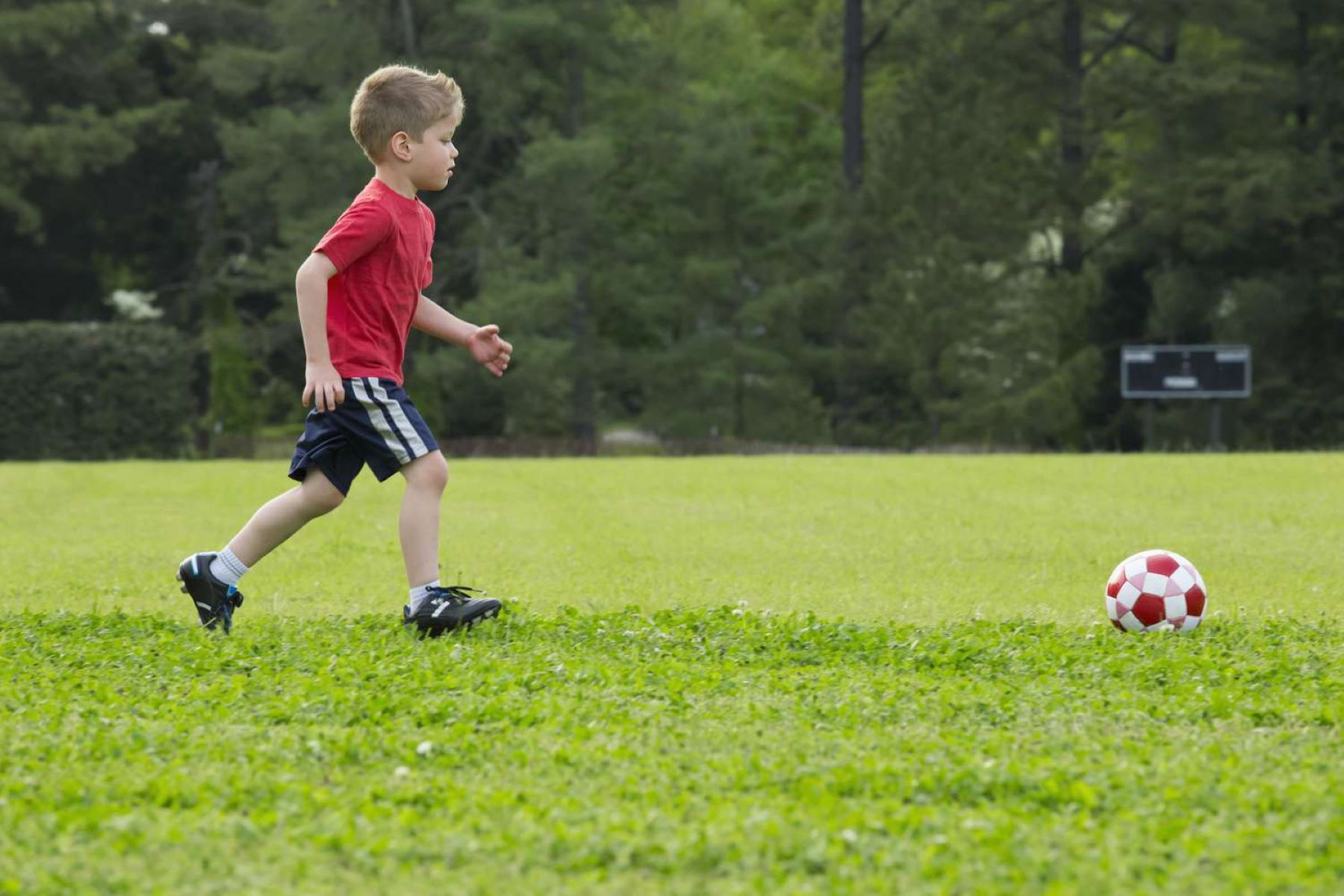

Lifestyle
10 Inappropriate Games We Played As Kids!
Published: February 16, 2024
Discover 10 inappropriate games we played as kids and reminisce about the wild antics of our childhood. Explore the lifestyle of a bygone era and see how times have changed.
(Many of the links in this article redirect to a specific reviewed product. Your purchase of these products through affiliate links helps to generate commission for Regretless.com, at no extra cost. Learn more)
Table of Contents
Introduction
Childhood is often associated with innocence, carefree days, and simple pleasures. However, as we reflect on our early years, it becomes evident that some of the games we innocently engaged in were not as innocent as they seemed. The games we played as children often reflected our curiosity, fear, and desire for excitement. Some of these games, in retrospect, were inappropriate, bordering on the edge of danger and superstition. Let's take a trip down memory lane and explore 10 inappropriate games that were surprisingly popular among kids.
These games were not just innocent pastimes; they were infused with a sense of mystery, thrill, and sometimes a hint of danger. From the classic game of "Doctor" to the spine-chilling ritual of "Bloody Mary," these childhood activities often pushed the boundaries of what was considered appropriate for young minds. As we delve into each game, it's important to acknowledge that while these activities may have seemed harmless at the time, they carried an air of intrigue and risk that captivated our youthful spirits.
Join me as we revisit these 10 inappropriate games, each with its own blend of nostalgia, mischief, and a touch of the forbidden. As we reminisce about these childhood pastimes, we'll unravel the reasons behind their popularity and the lasting memories they have left imprinted on our minds. So, fasten your seatbelts as we embark on this intriguing journey through the inappropriate games of our childhood.
Doctor
As children, one of the most common and often inappropriate games we played was "Doctor." This game involved role-playing as a doctor and a patient, with a focus on the examination of various body parts. While innocent on the surface, this game often led to awkward and sometimes uncomfortable situations, especially when children delved into areas they didn't fully understand.
The game typically unfolded with one child assuming the role of the doctor, equipped with makeshift medical tools such as toy stethoscopes and bandages, while the other child played the patient. The "doctor" would proceed to examine the "patient" by touching, prodding, and sometimes even attempting to administer pretend injections. This innocent role-playing often crossed boundaries, as children mimicked adult medical examinations without fully comprehending the implications.
The game of "Doctor" inadvertently introduced children to concepts of bodily privacy and personal boundaries, sometimes in ways that were inappropriate for their age. It blurred the lines between innocent make-believe and the sensitive nature of medical examinations, leading to potential misunderstandings and discomfort.
While the game of "Doctor" may have seemed harmless at the time, it's important to acknowledge the potential for confusion and discomfort it could create for young participants. Looking back, it's clear that this childhood game often tiptoed into the realm of inappropriate behavior, despite its innocent intentions.
In retrospect, "Doctor" serves as a reminder of how childhood innocence can sometimes intersect with adult themes, albeit in a lighthearted manner. This game, while a common part of many childhoods, highlights the complexities of navigating boundaries and understanding the nuances of human interaction, even in the seemingly simple context of play.
The game of "Doctor" may have been a playful exploration of the unknown for children, but it also carried undertones of curiosity and innocence that often brushed against the edges of appropriateness. As we reflect on this childhood pastime, it's essential to recognize the delicate balance between imaginative play and the potential for unintended misunderstandings that it entailed.
House
Another classic childhood game that often ventured into the realm of inappropriateness was the game of "House." This imaginative play involved children role-playing as family members, with each participant assuming different roles within a household setting. While on the surface, it appeared to be a harmless game of make-believe, "House" often delved into scenarios that mirrored adult interactions and responsibilities.
Children would assign themselves roles such as parents, siblings, or even family pets, and proceed to act out various domestic scenes. This could range from preparing meals and tending to imaginary chores to mimicking adult conversations and even exploring romantic relationships. The game sometimes led to the enactment of scenarios that were beyond the scope of a child's understanding, inadvertently exposing them to adult dynamics and relationships.
In the context of "House," children often emulated the behaviors and interactions they observed in the adult world, blurring the lines between innocent play and the complexities of grown-up life. This imaginative game occasionally led to the portrayal of adult roles and responsibilities, introducing children to scenarios that were not entirely suitable for their age.
The game of "House" provided a glimpse into the adult world through the lens of a child's imagination, allowing them to explore and mimic the dynamics they observed in their own households or in the media. While the intentions behind this game were rooted in innocent make-believe, it often resulted in children navigating scenarios that mirrored adult life, albeit in a simplified and sometimes inappropriate manner.
Reflecting on the game of "House" prompts a deeper understanding of how childhood play can inadvertently intersect with the complexities of adult relationships and responsibilities. It serves as a reminder of the fine line between imaginative exploration and the unintentional exposure to adult themes, highlighting the delicate balance of allowing children to engage in creative play while safeguarding them from premature exposure to grown-up dynamics.
As we revisit the game of "House," it becomes evident that this childhood pastime, while cherished for its imaginative qualities, occasionally tiptoed into the territory of inappropriateness, blurring the boundaries between innocent play and the nuanced realities of adult life.
Cops and Robbers
As children, one of the most exhilarating and popular games that often blurred the lines of appropriateness was the timeless classic, "Cops and Robbers." This thrilling game revolved around the age-old conflict between law enforcement and criminal elements, with children assuming the roles of either the pursuing officers or the elusive robbers. While on the surface, it appeared to be a harmless game of chase and capture, "Cops and Robbers" often delved into scenarios that mirrored real-world law enforcement and criminal activities.
The game typically unfolded with enthusiastic participants dividing themselves into two groups – the "cops" and the "robbers." The "cops" would don makeshift badges and toy handcuffs, while the "robbers" would concoct elaborate escape plans and engage in pretend heists. The game would then commence with high-energy pursuits, dramatic standoffs, and simulated arrests, often culminating in the triumphant capture of the "robbers."
"Cops and Robbers" inadvertently introduced children to the dynamics of law enforcement and criminal activities, albeit in a playful and exaggerated manner. The game occasionally led to the portrayal of intense chase sequences, dramatic confrontations, and the simulation of criminal behavior, blurring the lines between innocent play and the portrayal of real-world law enforcement scenarios.
In the context of "Cops and Robbers," children often emulated the roles and dynamics they observed in action-packed movies and television shows, infusing the game with a sense of excitement and adventure. The game allowed participants to explore themes of justice, pursuit, and the thrill of outsmarting the opposing team, creating an atmosphere of exhilaration and suspense.
Reflecting on the game of "Cops and Robbers" prompts a deeper understanding of how childhood play can inadvertently intersect with the complexities of real-world law enforcement and criminal activities. It serves as a reminder of the fine line between imaginative exploration and the unintentional exposure to themes of pursuit, capture, and criminal behavior, highlighting the delicate balance of allowing children to engage in creative play while safeguarding them from premature exposure to the realities of law enforcement.
As we revisit the game of "Cops and Robbers," it becomes evident that this childhood pastime, while cherished for its thrilling qualities, occasionally tiptoed into the territory of inappropriateness, blurring the boundaries between innocent play and the nuanced realities of law enforcement and criminal activities.
Truth or Dare
One of the most iconic and potentially inappropriate games that permeated childhood gatherings and sleepovers was the timeless classic, "Truth or Dare." This game of daring challenges and revealing truths served as a thrilling yet often boundary-pushing pastime for many youngsters.
The game typically commenced with participants forming a circle, taking turns to either truthfully answer a probing question or courageously tackle a daring challenge. The questions and dares ranged from lighthearted inquiries about crushes and secret admirers to audacious challenges that tested one's limits and often led to unexpected outcomes.
"Truth or Dare" introduced an element of risk and vulnerability, as participants grappled with the decision to divulge personal secrets or embark on daring feats. The game often ventured into the realm of inappropriateness, especially when probing questions delved into sensitive topics or dares pushed the boundaries of comfort and safety.
In the context of "Truth or Dare," children were exposed to a range of personal inquiries and audacious challenges that sometimes exceeded the boundaries of age-appropriate interactions. The game blurred the lines between innocent curiosity and the potential for discomfort, as participants navigated the delicate balance of honesty and daring exploits.
The game of "Truth or Dare" often served as a catalyst for exploring personal boundaries and confronting fears, albeit in a manner that occasionally veered into the realm of inappropriateness. It provided a platform for participants to test their courage and honesty, but also posed the risk of delving into topics and challenges that were not entirely suitable for their age.
Reflecting on the game of "Truth or Dare" prompts a deeper understanding of how childhood play can inadvertently intersect with the complexities of personal disclosure and audacious feats. It serves as a reminder of the fine line between playful exploration and the unintentional exposure to sensitive topics and daring challenges, highlighting the delicate balance of allowing children to engage in creative play while safeguarding them from premature exposure to adult themes.
As we revisit the game of "Truth or Dare," it becomes evident that this childhood pastime, while cherished for its thrill and excitement, occasionally tiptoed into the territory of inappropriateness, blurring the boundaries between innocent play and the nuanced realities of personal disclosure and audacious challenges.
Spin the Bottle
One of the most iconic and controversial games that often found its way into the realm of childhood gatherings and adolescent social circles was the notorious game of "Spin the Bottle." This game of chance and romantic intrigue served as a thrilling yet often boundary-pushing pastime for many youngsters, igniting a mix of excitement, anticipation, and sometimes trepidation.
The game typically unfolded with participants forming a circle, with a bottle placed at the center. One brave individual would take the lead, spinning the bottle with a flick of the wrist, setting the stage for a heart-pounding moment of truth. As the bottle whirled and twirled, all eyes were fixed on its final resting place, as it pointed towards the chosen participant. What followed was a pivotal moment of connection, as the spinner and the selected individual embarked on a brief yet charged encounter.
"Spin the Bottle" introduced an element of risk and vulnerability, as participants awaited the bottle's verdict, their hearts racing with a mixture of excitement and apprehension. The game often ventured into the realm of inappropriateness, especially when the chosen individuals were tasked with a kiss or a romantic gesture, blurring the lines between innocent play and the exploration of budding emotions.
In the context of "Spin the Bottle," children and adolescents were exposed to a range of intimate encounters and romantic possibilities that sometimes exceeded the boundaries of age-appropriate interactions. The game blurred the lines between innocent curiosity and the potential for discomfort, as participants navigated the delicate balance of romantic exploration and the uncertainties of young love.
The game of "Spin the Bottle" often served as a catalyst for exploring budding emotions and social dynamics, albeit in a manner that occasionally veered into the realm of inappropriateness. It provided a platform for participants to experience the thrill of chance and the complexities of romantic interactions, but also posed the risk of delving into scenarios that were not entirely suitable for their age.
Reflecting on the game of "Spin the Bottle" prompts a deeper understanding of how childhood and adolescent play can inadvertently intersect with the complexities of romantic intrigue and social dynamics. It serves as a reminder of the fine line between playful exploration and the unintentional exposure to intimate encounters and romantic uncertainties, highlighting the delicate balance of allowing young individuals to navigate their emotions while safeguarding them from premature exposure to adult themes.
As we revisit the game of "Spin the Bottle," it becomes evident that this childhood and adolescent pastime, while cherished for its thrill and excitement, occasionally tiptoed into the territory of inappropriateness, blurring the boundaries between innocent play and the nuanced realities of romantic exploration and social dynamics.
Bloody Mary
One of the most chilling and infamous childhood rituals that sent shivers down the spines of many youngsters was the spine-tingling game of "Bloody Mary." This eerie and often forbidden activity was steeped in superstition and folklore, captivating the imaginations of daring participants while evoking a sense of primal fear.
The game typically unfolded in a dimly lit room, with participants gathering around a mirror, their expressions a mix of curiosity and trepidation. The ritual commenced with the summoning of Bloody Mary, a vengeful spirit rumored to appear when called upon in front of a mirror. The participants would chant the name "Bloody Mary" a specified number of times, each repetition heightening the atmosphere of suspense and apprehension.
As the incantation echoed through the hushed space, the participants awaited the spectral manifestation of Bloody Mary, their hearts pounding with a blend of fear and anticipation. The folklore surrounding this ritual varied, with some versions claiming that the ghostly figure would appear in the mirror, while others spoke of ominous consequences for those who dared to summon her presence.
"Bloody Mary" introduced an element of primal fear and superstition, as participants grappled with the unsettling prospect of summoning a vengeful spirit. The game veered into the realm of inappropriateness, delving into the supernatural and the macabre, blurring the lines between innocent curiosity and the exploration of dark, otherworldly forces.
In the context of "Bloody Mary," children and adolescents were exposed to a chilling and forbidden ritual that transcended the boundaries of typical childhood games. The eerie nature of the ritual often lingered in the minds of participants, leaving an indelible impression of fear and fascination.
The game of "Bloody Mary" often served as a conduit for exploring primal fears and superstitions, albeit in a manner that occasionally veered into the realm of inappropriateness. It provided a platform for participants to confront their fears and test the boundaries of the unknown, but also posed the risk of delving into realms that were not entirely suitable for their age.
Reflecting on the ritual of "Bloody Mary" prompts a deeper understanding of how childhood and adolescent play can inadvertently intersect with the realms of superstition and primal fear. It serves as a reminder of the fine line between playful exploration and the unintentional exposure to dark, otherworldly forces, highlighting the delicate balance of allowing young individuals to navigate their fears while safeguarding them from premature exposure to unsettling and forbidden rituals.
As we revisit the ritual of "Bloody Mary," it becomes evident that this childhood and adolescent activity, while notorious for its spine-tingling nature, occasionally tiptoed into the territory of inappropriateness, blurring the boundaries between innocent play and the chilling realities of superstition and primal fear.
Light as a Feather, Stiff as a Board
One of the most intriguing and mystifying childhood games that captured the imagination of young participants was the enigmatic ritual of "Light as a Feather, Stiff as a Board." This mesmerizing activity, often performed during sleepovers and gatherings, blended elements of folklore, superstition, and collective belief, creating an atmosphere of eerie fascination and shared anticipation.
The game unfolded with participants gathering around a prone individual, who willingly offered themselves to be lifted using only the collective power of the group's fingertips. The chant of "Light as a feather, stiff as a board" echoed through the room, each repetition infusing the space with an aura of mystique and anticipation. As the chant reverberated, the participants focused their collective energy on the individual, aiming to defy the laws of physics and elevate them with an ethereal touch.
The ritual of "Light as a Feather, Stiff as a Board" introduced an element of collective belief and mysticism, as participants united in their endeavor to elevate the willing individual using only the power of their fingertips. The game ventured into the realm of the supernatural and the unexplained, blurring the boundaries between innocent play and the exploration of inexplicable forces.
In the context of this ritual, children and adolescents were exposed to a shared experience that transcended the boundaries of typical childhood games. The collective belief and focused energy created an atmosphere of shared anticipation and wonder, as participants sought to defy conventional understanding and create a moment of inexplicable elevation.
The game of "Light as a Feather, Stiff as a Board" often served as a conduit for exploring the mysteries of collective belief and the unexplained, albeit in a manner that occasionally veered into the realm of inappropriateness. It provided a platform for participants to unite in a shared endeavor that defied conventional logic, but also posed the risk of delving into realms that were not entirely suitable for their age.
Reflecting on the ritual of "Light as a Feather, Stiff as a Board" prompts a deeper understanding of how childhood and adolescent play can inadvertently intersect with the realms of collective belief and the unexplained. It serves as a reminder of the fine line between playful exploration and the unintentional exposure to mysticism and inexplicable forces, highlighting the delicate balance of allowing young individuals to navigate their curiosity while safeguarding them from premature exposure to supernatural realms.
Ouija Board
The Ouija board, a mystifying and often controversial tool for communicating with the spirit world, has captured the imaginations of countless individuals, especially during their formative years. This enigmatic board, adorned with letters, numbers, and symbols, serves as a conduit for participants to seek answers from the beyond, blurring the lines between the tangible and the intangible.
The game typically unfolds with participants gathering around the Ouija board, their fingers lightly resting on a planchette, a heart-pounding mixture of trepidation and anticipation permeating the room. As the participants pose questions to the unknown, the planchette seemingly moves of its own accord, gliding across the board to reveal cryptic messages and responses. The collective belief in the board's ability to channel otherworldly entities creates an atmosphere of eerie fascination and shared anticipation, often tinged with a hint of fear.
The Ouija board introduces an element of supernatural exploration and collective belief, as participants unite in their endeavor to seek answers from realms beyond their understanding. The game ventures into the realm of the unexplained and the mystical, blurring the boundaries between innocent play and the exploration of inexplicable forces. The shared experience of seeking messages from the spirit world creates a sense of interconnectedness and wonder, as participants navigate the delicate balance between curiosity and the unknown.
In the context of the Ouija board, children and adolescents are exposed to a shared experience that transcends the boundaries of typical childhood games. The collective belief and focused energy create an atmosphere of shared anticipation and wonder, as participants seek to unlock the mysteries of the spirit world. The game serves as a conduit for exploring the complexities of the unknown, albeit in a manner that occasionally veers into the realm of inappropriateness. It provides a platform for participants to unite in a shared endeavor that defies conventional logic, but also poses the risk of delving into realms that may not be entirely suitable for their age.
Reflecting on the mystique of the Ouija board prompts a deeper understanding of how childhood and adolescent play can inadvertently intersect with the realms of collective belief and the unexplained. It serves as a reminder of the fine line between playful exploration and the unintentional exposure to mysticism and inexplicable forces, highlighting the delicate balance of allowing young individuals to navigate their curiosity while safeguarding them from premature exposure to supernatural realms.
Red Rover
Red Rover, a quintessential playground game, embodied the spirit of friendly competition and physical prowess. This exhilarating game often brought together groups of enthusiastic children, eager to test their strength and strategic prowess against their peers. The game typically unfolded with participants dividing into two teams, each forming a linked chain by clasping hands to create a formidable barrier.
The objective of Red Rover was simple yet thrilling – one team would summon a member from the opposing team by chanting, "Red Rover, Red Rover, send [name] right over." The nominated individual would then muster their courage and charge towards the opposing team, aiming to break through their linked chain. This pivotal moment of the game was marked by heart-pounding anticipation, as the charging player sought to breach the defenses of the opposing team's united front.
Red Rover encapsulated the essence of physical coordination, teamwork, and spirited competition. The charging player's determination and the opposing team's resilience created an atmosphere charged with energy and excitement. The game fostered a sense of camaraderie and healthy competition, as participants cheered on their teammates and strategized to outmaneuver the opposing team.
The game often led to moments of exhilaration and triumph as the charging player successfully broke through the opposing team's chain, signaling a victory for their team. Conversely, it also cultivated resilience and sportsmanship, as the defending team regrouped and prepared for the next round of the thrilling contest.
In the context of Red Rover, children and adolescents engaged in a spirited display of physical prowess and strategic thinking, fostering a sense of unity and healthy competition. The game provided a platform for participants to test their physical abilities and coordination while cultivating a spirit of teamwork and resilience.
Reflecting on the dynamics of Red Rover prompts a deeper understanding of how childhood play fosters physical coordination, teamwork, and spirited competition. It serves as a reminder of the joy and camaraderie that arise from collective physical activities, highlighting the enduring appeal of games that unite participants in the pursuit of shared excitement and friendly competition.
